China has long been a country well-known for its rich resources, broad and profound culture and long-standing history, and China has been developing its two pillar industries, catering and tourism. China is a country where interesting and fun places can be found everywhere, and this article will introduce to you 10 most famous Chinese tourist attractions you must visit in China.
10The Great Wall:
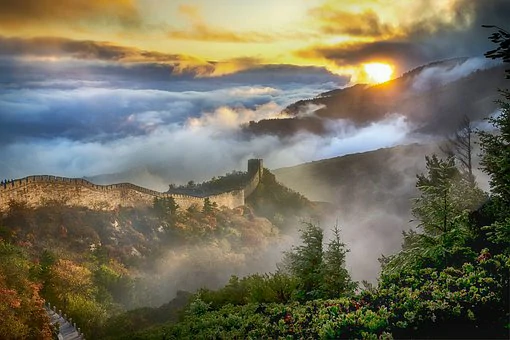
The Great Wall is a series of fortifications that stretches over 13,000 miles (21,000 km) across northern China, from Shanhaiguan in the east to Lop Lake in the west. It is the longest wall in the world and one of the most iconic symbols of China.
The construction of the Great Wall began over 2,000 years ago during the Warring States period, and was continued and rebuilt by successive dynasties, including the Qin, Han, and Ming dynasties. The wall was built to protect China’s northern borders from invasions by nomadic tribes, and was also used as a means of regulating trade and controlling immigration and emigration.
The wall consists of many different sections, some of which are in ruins, while others have been restored and opened to tourists. The most famous sections of the wall include Badaling, Mutianyu, and Jinshanling, which attract millions of visitors each year.
The Great Wall is not just a remarkable feat of engineering, but also a cultural and historical icon that embodies the strength, determination, and perseverance of the Chinese people.
9The Terracotta Army

The Terracotta Army, also known as the Terracotta Warriors and Horses, is a collection of life-sized sculptures made of terracotta that were buried with the first emperor of China, Qin Shi Huang, in the 3rd century BCE. The Terracotta Army is located in the city of Xi’an in the Shaanxi Province of China.
The Terracotta Army is one of the most significant archaeological discoveries of the 20th century. Discovered in 1974 by a group of farmers digging a well, the army consists of over 8,000 individual figures, including soldiers, chariots, and horses, each with unique facial expressions and clothing.
The purpose of the Terracotta Army was to protect the emperor in the afterlife, and it is believed that the figures were created to replicate the emperor’s real-life army. The figures were buried with the emperor in a massive underground mausoleum, which is still largely unexcavated.
The Terracotta Army is now a popular tourist attraction and a UNESCO World Heritage site. Visitors can see the army on display in three separate pits, each containing different types of figures. The site also includes a museum and several other attractions that provide insights into the history and culture of ancient China.
The Terracotta Army is a testament to the remarkable artistic and technological achievements of the Qin Dynasty and remains an important symbol of Chinese history and culture. (Useful Xian Maps)
8The Forbidden City
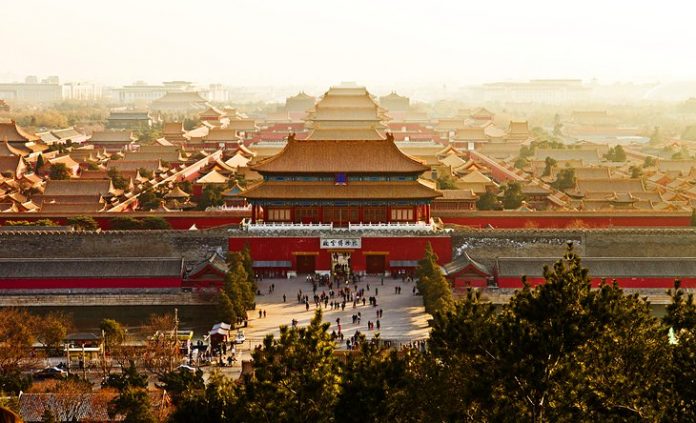
The Forbidden City, also known as the Palace Museum, is a complex of palaces and courtyards located in the heart of Beijing, China. It was the imperial palace of China’s emperors for nearly 500 years, from the Ming dynasty to the end of the Qing dynasty.
The Forbidden City was constructed from 1406 to 1420 under the orders of Emperor Yongle of the Ming dynasty. The palace complex covers an area of 720,000 square meters and consists of 980 buildings, including 8,707 rooms and halls. The architecture of the Forbidden City is a combination of traditional Chinese design and imperial style.
The Forbidden City was so named because it was off-limits to the general public for centuries, with access only granted to the imperial family and their entourage. Today, the complex is open to the public and is one of the most popular tourist attractions in China, attracting millions of visitors every year.
The Forbidden City is home to an extensive collection of imperial treasures and artifacts, including artwork, ceramics, calligraphy, and more. Many of these items are on display in the palace’s various halls and chambers, providing visitors with a glimpse into China’s rich cultural heritage.
The Forbidden City is a symbol of the power and grandeur of imperial China and remains an important part of China’s cultural heritage. It was designated a UNESCO World Heritage site in 1987 and continues to be an important landmark and tourist destination in Beijing.
7The Li River
The Li River is a beautiful natural attraction located in southern China, stretching 83 kilometers from Guilin to Yangshuo in the Guangxi Zhuang Autonomous Region. It is one of the most picturesque rivers in China, known for its crystal-clear waters, stunning karst peaks, and verdant vegetation.
The Li River has been a popular destination for tourists for hundreds of years, with many ancient poets and artists immortalizing its beauty in their works. The river’s most famous section is the stretch between Guilin and Yangshuo, which is often referred to as the “Li River Scenic Area.”
Visitors to the Li River can take a leisurely cruise down the river, which takes around four to five hours and offers stunning views of the surrounding karst peaks, rice paddies, and traditional Chinese villages. The river is also a popular spot for hiking and biking, with many trails offering spectacular views of the landscape.
The Li River is also home to a wide variety of wildlife, including the endangered Chinese river dolphin and many species of fish, birds, and reptiles.
The Li River is a symbol of China’s natural beauty and cultural heritage and remains one of the most popular tourist destinations in China. Its stunning scenery and tranquil atmosphere make it an unforgettable experience for anyone who visits.
6The Zhangjiajie National Park
Zhangjiajie National Park is a stunning natural attraction located in the northwest of Hunan Province, China. It is known for its dramatic landscape of towering sandstone pillars, lush forests, and winding rivers. The park covers an area of 1,070 square kilometers and was designated a UNESCO World Heritage site in 1992.
The park’s most famous feature is the Avatar Hallelujah Mountain, which was the inspiration for the floating mountains seen in the movie “Avatar.” Other popular attractions in the park include the Tianzi Mountain, the Golden Whip Stream, and the Yuanjiajie Scenic Area.
Visitors to the park can take a cable car to the top of the mountains to enjoy stunning views of the surrounding landscape, hike along the many trails that wind through the park, or take a boat ride down the picturesque rivers.
Zhangjiajie National Park is also home to a wide variety of flora and fauna, including rare and endangered species such as the Chinese giant salamander, the Asiatic black bear, and the clouded leopard.
The park is a symbol of China’s natural beauty and cultural heritage and has become one of the most popular tourist destinations in the country. Its unique and awe-inspiring landscape is a testament to the incredible power of nature and an unforgettable experience for anyone who visits.
5The Shanghai Bund
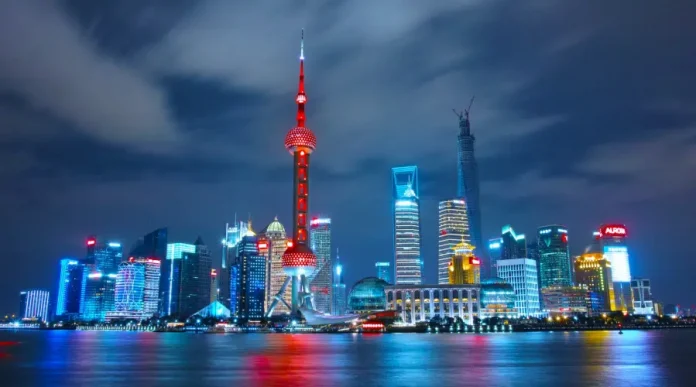
The Shanghai Bund is a famous waterfront area located in central Shanghai, China. It stretches for 1.5 kilometers along the Huangpu River and is known for its stunning views of the city’s modern skyline and historic buildings.
The Bund has a rich history dating back to the early 20th century, when it was a major commercial and financial center for China and the world. Today, it remains an important cultural and economic hub and is one of the most popular tourist destinations in China.
The Bund is home to a variety of architectural styles, including Gothic, Baroque, and Art Deco. Some of the most famous buildings on the Bund include the Peace Hotel, the Customs House, and the Shanghai Pudong Development Bank.
Visitors to the Bund can take a leisurely stroll along the waterfront, enjoying the stunning views of the river and the city skyline. They can also take a boat ride along the Huangpu River to see the city from a different perspective.
In recent years, the Bund has become a popular spot for shopping and dining, with many upscale restaurants, cafes, and shops opening in the area.
The Shanghai Bund is a symbol of China’s past, present, and future, and remains an important landmark and tourist destination in Shanghai. Its stunning architecture and vibrant atmosphere make it an unforgettable experience for anyone who visits.
4The Yungang Grottoes
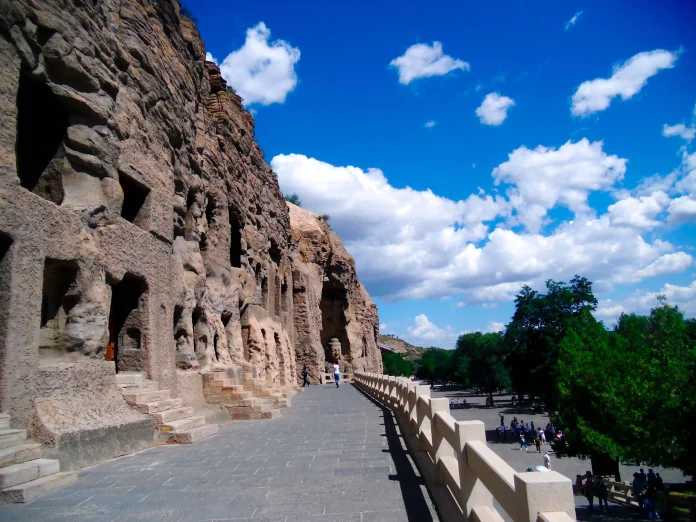
The Yungang Grottoes, located in the Shanxi province of China, are a stunning example of ancient Buddhist cave art and one of the most important cultural sites in China. The grottoes were constructed in the 5th and 6th centuries and contain over 50,000 statues and carvings.
Yungang Grottoes 云冈石窟 – Chinese Attractions
The grottoes consist of 252 caves and niches, carved into a sandstone cliff, covering an area of approximately 18,000 square meters. The largest cave measures over 17 meters in height and contains a statue of Buddha that is over 13 meters tall.
The carvings and statues at Yungang Grottoes are a testament to the skill and artistry of ancient Chinese craftsmen. The sculptures are finely detailed and capture the grace and beauty of the human form, while the intricate carvings on the cave walls depict scenes from Buddhist scripture and mythology.
In addition to their cultural significance, the grottoes are also an important historical record of the Tang dynasty, reflecting the influence of Indian and Central Asian Buddhist art on Chinese culture.
The Yungang Grottoes were designated a UNESCO World Heritage site in 2001 and remain an important cultural and tourist attraction in China. Their stunning beauty and historical significance make them a must-see for anyone interested in Chinese art and culture.
3The Potala Palace
The Potala Palace is a majestic and iconic architectural wonder located in Lhasa, the capital of the Tibet Autonomous Region of China. It is a magnificent structure that stands on the Red Hill, rising 130 meters above the Lhasa Valley.
Potala Palace 布达拉宫 – Chinese Attractions
The palace was constructed in the 7th century as a fortress and was later expanded into a palace by the 5th Dalai Lama in the 17th century. It served as the winter palace of the Dalai Lamas and the center of Tibetan Buddhism until the 14th Dalai Lama fled to India in 1959.
The Potala Palace is a UNESCO World Heritage site and is considered one of the most important cultural and historical sites in China. It is a prime example of Tibetan architecture, featuring intricate carvings, colorful murals, and over a thousand rooms containing priceless artifacts, statues, and religious treasures.
Visitors to the Potala Palace can climb the steep steps to the palace’s main entrance and explore the many halls and chambers, including the Red Palace, which houses the main temple of the palace and contains the tombs of several Dalai Lamas.
The Potala Palace is a symbol of Tibetan culture and spirituality and is one of the most important landmarks in China. Its stunning beauty, rich history, and cultural significance make it an unforgettable experience for anyone who visits.
2The Temple of Heaven
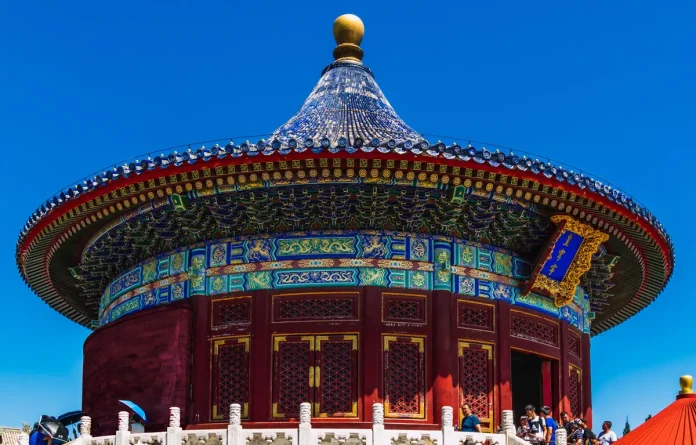
The Temple of Heaven is an ancient religious complex located in Beijing, China, and is considered one of the most significant cultural and historical sites in the country. It was built in the early 15th century and served as a place of worship and sacrifice for the emperors of the Ming and Qing dynasties.
Temple of Heaven 天坛 – Chinese Attractions
The Temple of Heaven consists of several buildings, including the Hall of Prayer for Good Harvests, the Imperial Vault of Heaven, and the Circular Mound Altar. The Hall of Prayer for Good Harvests is a magnificent circular building with a triple-eaved roof, and it is the most recognizable structure in the complex.
The Imperial Vault of Heaven is a smaller circular building that served as a storage place for the tablets of the gods. The Circular Mound Altar is an open-air altar used for the emperor’s sacrifices to the gods.
The Temple of Heaven is surrounded by a beautiful park with many gardens, trees, and pavilions, making it a popular spot for locals and tourists alike. The park is also used by locals for traditional activities such as tai chi, kite-flying, and ballroom dancing.
The Temple of Heaven is a UNESCO World Heritage site and is considered a masterpiece of Chinese architecture and religious culture. Its stunning beauty, rich history, and cultural significance make it an essential destination for anyone visiting Beijing or interested in Chinese history and culture.
1The Victoria Peak
Victoria Peak, also known as Mount Austin, is a hill located on Hong Kong Island in China, and is one of the most popular tourist attractions in the city. At 552 meters, it is the highest peak on the island, offering stunning panoramic views of the city’s skyline and Victoria Harbour.
Visitors to Victoria Peak can reach the summit by taking the Peak Tram, a funicular railway that has been in operation since 1888. The tram ride itself is an attraction, as it climbs the steep slope of the hill and offers breathtaking views of the surrounding area.
At the top of the hill, visitors can enjoy the panoramic views of the city from the Peak Tower, which houses several restaurants, shops, and observation decks. The Sky Terrace 428, located on the top level of the Peak Tower, is the highest viewing platform in Hong Kong, offering 360-degree views of the city and its surroundings.
Victoria Peak is also a popular spot for hiking and nature lovers, with several hiking trails leading up to the summit from different parts of the island. The trails offer stunning views of the city and harbor and are a great way to escape the hustle and bustle of the city and enjoy the natural beauty of Hong Kong.
Victoria Peak is one of the most famous landmarks in Hong Kong and is an essential destination for anyone visiting the city. Its stunning views, rich history, and natural beauty make it a must-see attraction that should not be missed.
From historical sites, cultural landmarks to natural wonders, China’s tourism resources are rich and diverse. The 10 attractions highlight some of the best of China that international visitors must experience in person. They represent the essence of Chinese history, culture, philosophy and aesthetics over thousands of years. During your future study journey in China, don’t forget to visit the countless amazing tourist attractions in China, which will surely expand your horizon and your understanding of this country.









